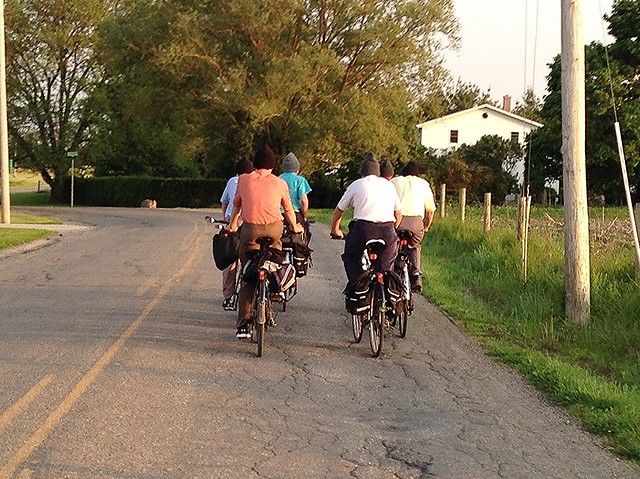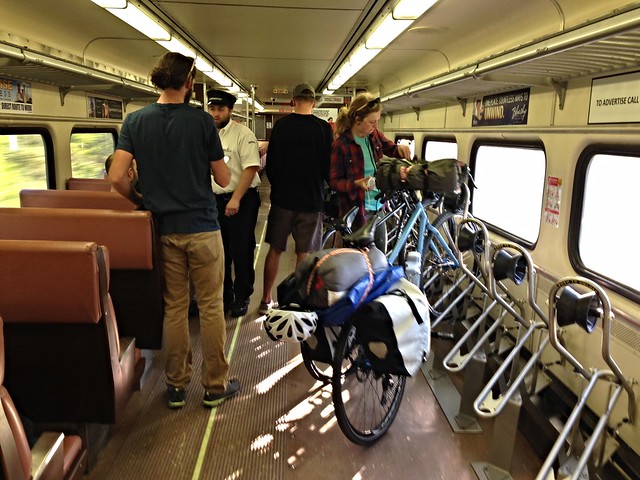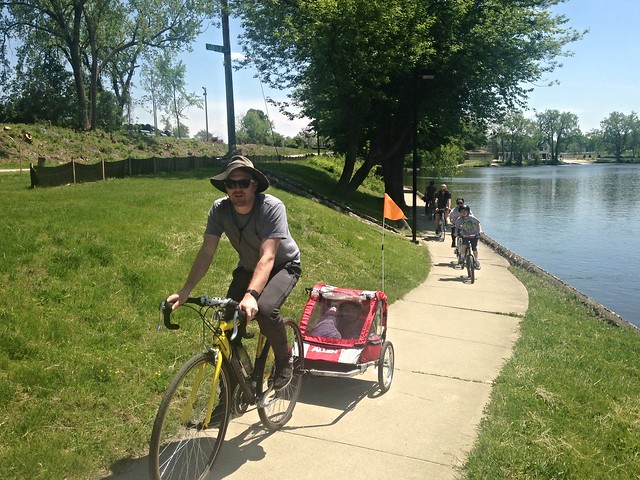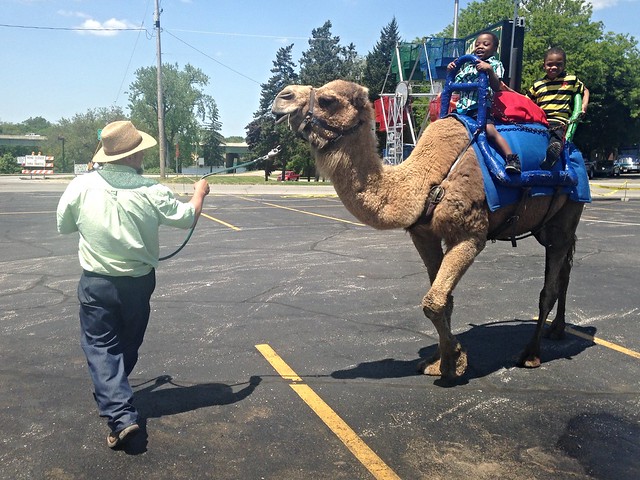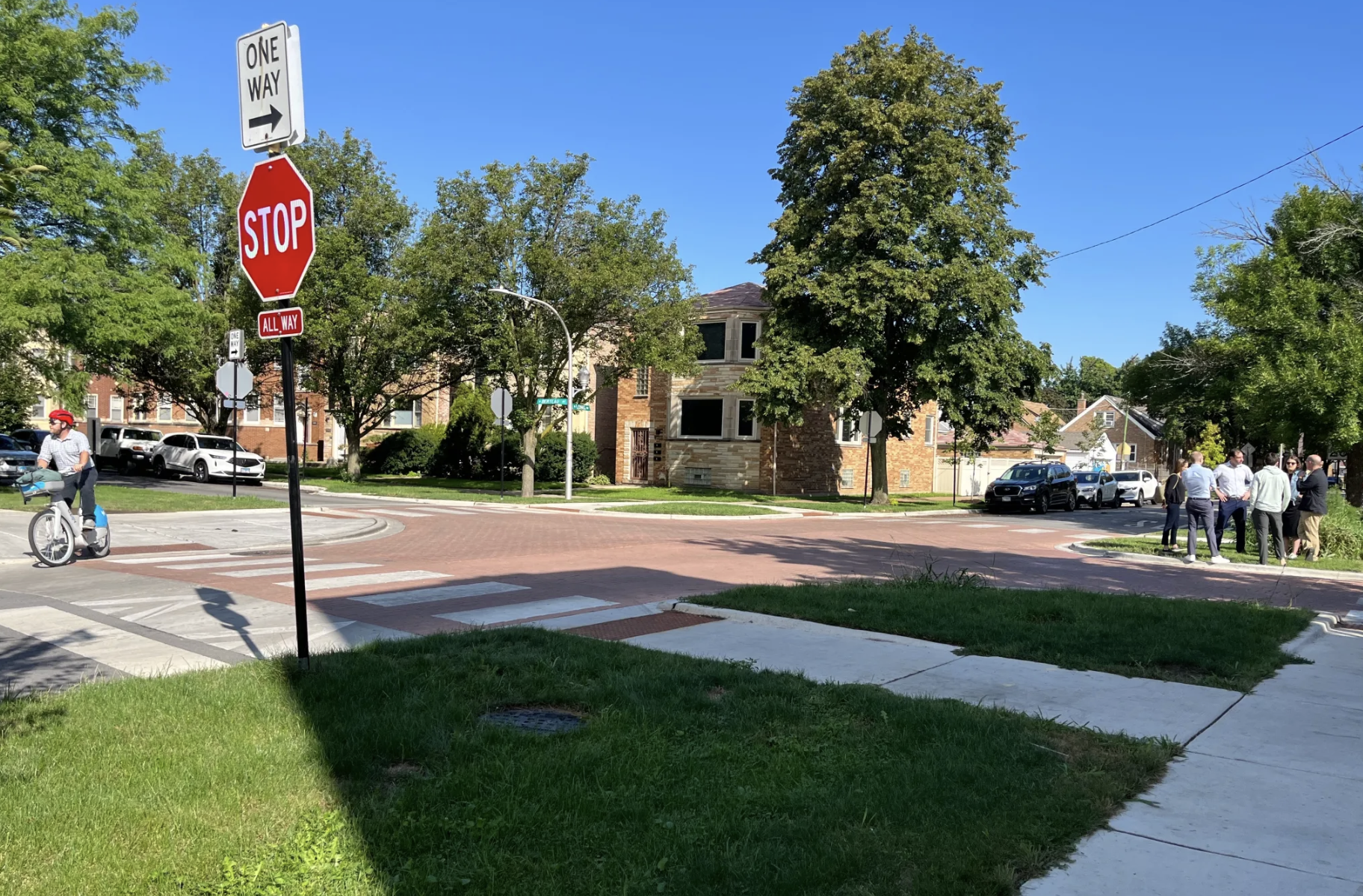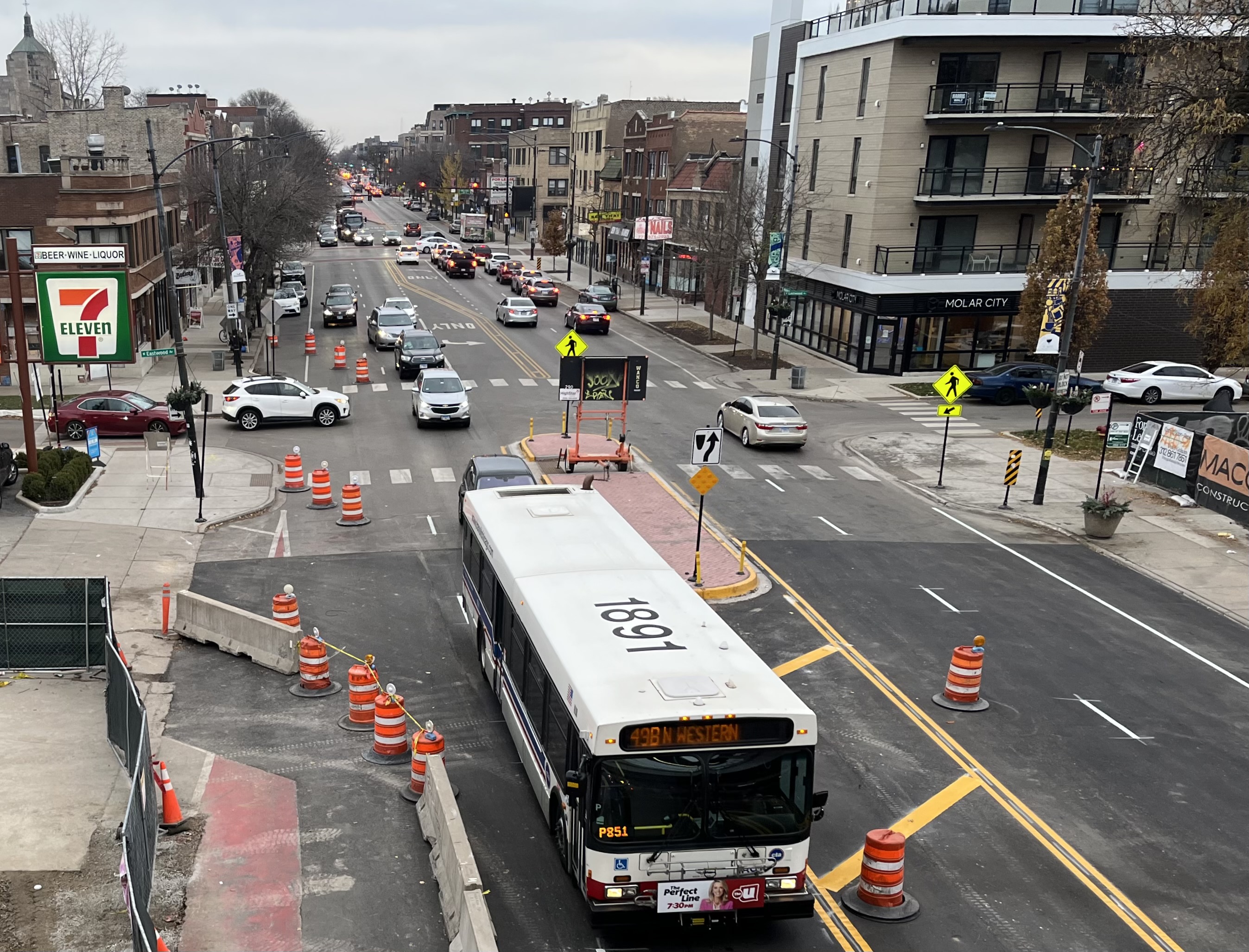[This article runs in this week's Chicago Reader. It's a little off-topic for Streetsblog, but I thought our readers would enjoy it. -- John]
When I was growing up in central Pennsylvania, there were Amish settlements nearby, so you never had to travel far for some Lebanon bologna (Pennsylvania Dutch-style beef sausage) or a jar of "chow-chow" corn relish. But I never saw those technology-averse folks riding bicycles until I took a recent train-and-bike trip to the Amish country of northern Indiana.
There, I saw lots of folks, young and old, cycling in black hats and bonnets. They were pedaling everything from Spartan black three-speeds to fancy aluminum road bikes to the goofy-looking recumbent bicycles most often associated with a different breed of bearded men: college professors.
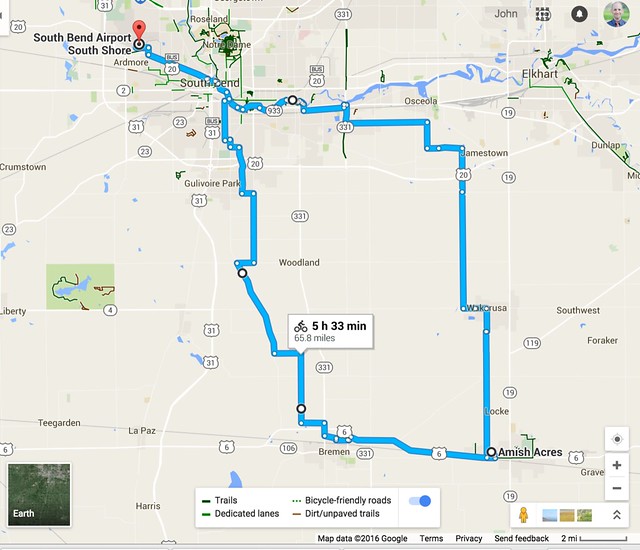
The raison d'etre for my journey was to try out the new bikes-on-board service on the South Shore Line commuter railroad, which runs from Millennium Park to South Bend, Indiana, the home of Notre Dame University. While Metra has accommodated cyclists since 2005, the South Shore Line dragged its feet on the issue for a ridiculously long time. The railroad finally launched a pilot program in April.
For my maiden voyage, I decided to pay a visit to the plain folk in the heavily Amish region east of South Bend, which includes the towns of Goshen, Middlebury, and Shipshewana. I opted for a pilgrimage to Nappanee, a town of 6,648 that's home to Amish Acres Farm. It's sort of an Historic Jamestowne for Pennsylvania Dutch culture, located an easy 35-mile pedal southeast from the South Bend Airport rail station.
I pedaled to Chicago's Millennium Station early one Saturday morning and rolled my bike onto the South Shore platform, where a conductor cheerfully showed me to the two bike cars. Half of the seats had been removed to make room for the bike racks, with space for a total of 40 bicycles.
During the two-and-a-half-hour trip, I boned up on the origins of the Indiana Amish. They are believed to have emigrated from Germany to the American colonies in 1727, seeking religious freedom. Due to a mispronunciation of the word "Deutsch," they became known as the Pennsylvania Dutch. The first Amish migrated to northern Indiana in the 1840s, eventually making their way to Nappanee.
After arriving in South Bend and riding a few miles on a busy bike path along the broad St. Joseph River, I looked to my left and saw . . . a camel. It was being led around a parking lot by a bearded Amish fellow, with two small boys riding on its hump. The dromedary belonged to Amish-owned Maple Lane Wildlife Farm near Shipshewana, which, judging from its brochure, also features a bear, a lion, a white tiger, a crocodile, and a porcupine.
The camel ride was part of a kiddie carnival going on outside South Bend's awesome indoor farmers market, which had a vast array of produce, including homegrown rhubarb and goods in Ball jars such as pickled beets and FROG jam (fig-raspberry-orange-ginger), plus an excellent giant pretzel stand run by teenage girls in prayer bonnets. I was so eager to eat that I nearly burned my lips on the piping-hot dough.
I continued along the river for several more miles, then made my way through gently rolling farmland. Just after the tiny town of Wakarusa—where I bought a bag of giant jelly beans at an old-timey candy store—I spied my first Amish person on a bike. He was a smooth-faced teenage boy in a stereotypical black hat, towing a trailer full of vegetables with an orange caution triangle on the back. He waved.
Soon I crossed paths with two teenage girls riding cruisers and wearing long, colorful dresses and bonnets. They didn't return my greeting.
